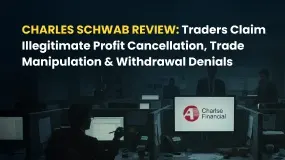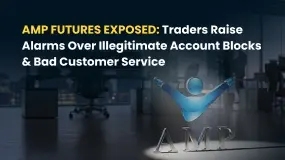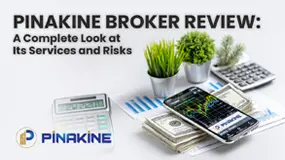简体中文
繁體中文
English
Pусский
日本語
ภาษาไทย
Tiếng Việt
Bahasa Indonesia
Español
हिन्दी
Filippiiniläinen
Français
Deutsch
Português
Türkçe
한국어
العربية
Why Is Economic Calendar Important for Forex Traders
Abstract:Economic calendar is one of the most important tools to a success when trading Forex as staying way ahead and being able to predict what impact important events and changes in the forex world may have on certain currencies is an effective way to make a profit and enjoy a consistent income.

While experienced traders are generally conscious of whats ahead on the economic calendar and understand how to interpret the numbers, newer traders, on the other hand, often expose their positions to unnecessary losses around news time. In this article, we will demonstrate the benefits of using the economic calendar to beginner traders.
What Is Economic Calendar
An economic calendar shows the scheduled news events or data releases related to the economy and financial markets, including new GDP growth rate figures, the latest non-farm payroll numbers, and interest rate decisions. There are loads of these economic data releases—at least once a week on average, and sometimes every day during particularly busy weeks.
The impact of the forex calendar can be partly as in just effecting some currency pairs or as a whole, some events may be so big they impact the whole market. Whether you are trading forex or any other asset class, economic data could impact your positions in the market, so it is important to keep an eye on the calendar throughout the day.
Importance of Economic Calendar for Trading
Below are the top five reasons why you should follow an economic calendar:
1. Be aware of upcoming economic events
The most basic but useful feature of an economic calendar is that it keeps you one step ahead when trading online. You will be informed of any economic events that will take place in the commodities market, the forex market, or any other trading market. Free trading news or news about economic events will help you a lot in making money in trading.
2. Understanding how the market operates
A benefit of the economic calendar that greatly improves beginner investors is understanding how the global markets work. Without actively making any trades, a new starter in the trading world can monitor the calendar and live charts to make the connections of what economic events are impacting which markets. Studying the movements can give you greater insight into a potential market you may want to enter and can teach yourself where to find a great entry and exit point.
3. Have future planning
Forex economic calendar allows for forwarding planning. For example, if the Nonfarm Payroll report will be released, forex traders will know that this indicator has the potential to move the forex market substantially. So with the awareness of NFP timings, forex traders can plan effective forex trading according to the news.
4. Mentally prepare yourself for any market changes
Live trading shows you various changes in market sentiment, market trend or asset prices. You cannot prepare yourself when you see a sudden change in the market.
Whether you are following a long-term trading approach or day trading. An economic calendar helps you to mentally prepare for various events in the market.
5. Risk Management
Risk management is one of the key elements of trading that all investors should include in their strategy. Extremely volatile market conditions are a risk in itself and the economic calendar presents an opportunity to highlight any upcoming events that could cause that type of volatility. Being aware of these events will allow you to plan your trades accordingly without further complicating your trading strategy.
Having a strict exit strategy like scalping, in place could mitigate the chance of risk. In the chance of high impact news events happening which could see huge spikes in the market, this strategy focuses on taking small profits off small price changes. So in case an upcoming event creates a huge swing in the market, you have already taken profits along the way.
How to Read An Economic Calender
In general, there are two main categories of events highlighted by the forex calendar and these are the predictions of future financial and economic events and the reports of recent financial and economic events. Both categories provide valuable information that can significantly affect your forex trading strategy and have an impact on the results you get when trading with currency.
Not all economic events have a significant impact on the forex market. There are two events, which are the most important and most effective:
Non-Farm Payroll
Non-farm payroll tracks the U.S. employment rate for the majority of the U.S. labour force. For instance, self-employed person, farmers, loss-making businesses, federal intelligence and military factions. The Bureau of Labor Statistics released these reports on the first Friday of every single month.
NFP reports show data on the number of new employment has created after the last month‘s reports, the total national jobless rate and the national labour force participation rate. Besides, the quantity of Americans who are effectively looking for employment or had lucratively utilised. Each of the three measurements viewed as a pointer of the country’s general financial wellbeing. Also, significantly affect both market discernment and the overall estimation of the U.S. dollar.
Central Bank Interest Rate Decision
Major banks interest rate decisions affect forex traders risk or reward while taking a conferred currency or holding a position. Preset interest rate decisions or report declarations by any of these major banks will undoubtedly impact trading psychology and increment market unpredictability for related forex pairs.
When using the economic calendar there are some important indicators that every investor needs to understand. The two main economic indicators to understand are leading indicators and lagging indicator.
Leading indicators
Leading indicators are any measurable or observable variables that look forward at future outcomes and events, predicting a movement or change. With a leading indicator, you are basically trying to predict the future, forecasting the timing, duration, and significance of future business and economic trends.
Lagging indicators
Lagging indicators are the opposite of leading indicators, where instead of looking forwards you are looking back at whether the intended outcome was accomplished. With a lagging indicator, you are able to confirm whether a long-term trend or shift in the economy has actually happened. Lagging indicators are typically easy to measure, identify and compare against though one downside is that they may provide important insights too late, with no time to do anything about them.

Disclaimer:
The views in this article only represent the author's personal views, and do not constitute investment advice on this platform. This platform does not guarantee the accuracy, completeness and timeliness of the information in the article, and will not be liable for any loss caused by the use of or reliance on the information in the article.
Read more

Charles Schwab Review: Traders Claim Illegitimate Profit Cancellation, Trade Manipulation & More
Have you been lured into the Charles Schwab app for trading on the back of outrageous profit claims by the broker? Did you fail to receive any of these? Does the broker deny withdrawals every time you request and cancel your forex trading account? Have you been victimized financially by its trade manipulation? Act before you are left with a NIL balance in your account. Many traders have questioned Charles Schwab customer service and many other operational executives for the aforementioned illegitimate trading activities. In this Charles Schwab review article, we have shared some of their comments. Read on!

AMP Futures Exposed: Traders Raise Alarms Over Illegitimate Account Blocks & Bad Customer Service
Has AMP Futures blocked your forex trading account? Does it fail to provide any explanation for this act? Do you face issues concerning deposits to your AMP Futures account? Is the customer service non-existent for any trading query you raise with it? You are not alone! Many traders have been facing these issues upon AMP Futures login. Some of them have commented on AMP Futures review platforms. In this article, we have shared some reviews that you can look at. Read on!

FXGlory Review: Vanishing Profits, Capital Scams & Withdrawal Charges Keep Annoying Traders
Does FXGlory remove all your forex trading account balances upon fund withdrawal requests? Or do you witness incorrect trading account balances after fund withdrawals? Does the Saint Lucia-based forex broker charge you for fund withdrawals? All these and many more scam-related complaints have been filed against the forex broker. In this FXGlory review article, we will discuss several complaints. Read on!

PINAKINE Broker Review: A Complete Look at Its Services and Risks
Finding a trustworthy broker from the huge and often confusing world of online trading options is one of the biggest challenges a trader faces. In this competitive market, PINAKINE Liquidity Limited has appeared, getting attention with promises of high leverage and zero-commission trading. However, a closer look shows important factors that every potential client must think about before investing. The most important thing to consider with PINAKINE is that it has no regulation. This fact completely changes how risky the broker is and has major effects on how safe your investments will be. This review gives a complete and fair examination based on information available to the public. We will break down its services, trading conditions, platform technology, and the possible risks involved, helping you make a fully informed decision.
WikiFX Broker
Latest News
Stonefort Securities Review: A Fair Look at Safety, Rules, and What Traders Say
Trump asks for meat packer probe over beef prices
Voices of the Golden Insight Award Jury | Tim Waterer, Chief Market Analyst of KCM Trade
Prop Firm Scams: When ‘Getting Funded’ Costs You Everything
PINAKINE Broker Review: A Complete Look at Its Services and Risks
One-Click Access to Broker Official Group Chats & Exclusive VPS Benefits
Consumer sentiment nears lowest level ever as worries build over shutdown
Uniglobe Markets MT4 Review: A Complete Look at Features, Costs, and Important Safety Issues
Is PINAKINE Broker Safe or a Scam? A 2025 Complete Review
Easy Money Doesn't Exist! High-Return Promise Turned into an RM44,000 Scam
Currency Calculator




